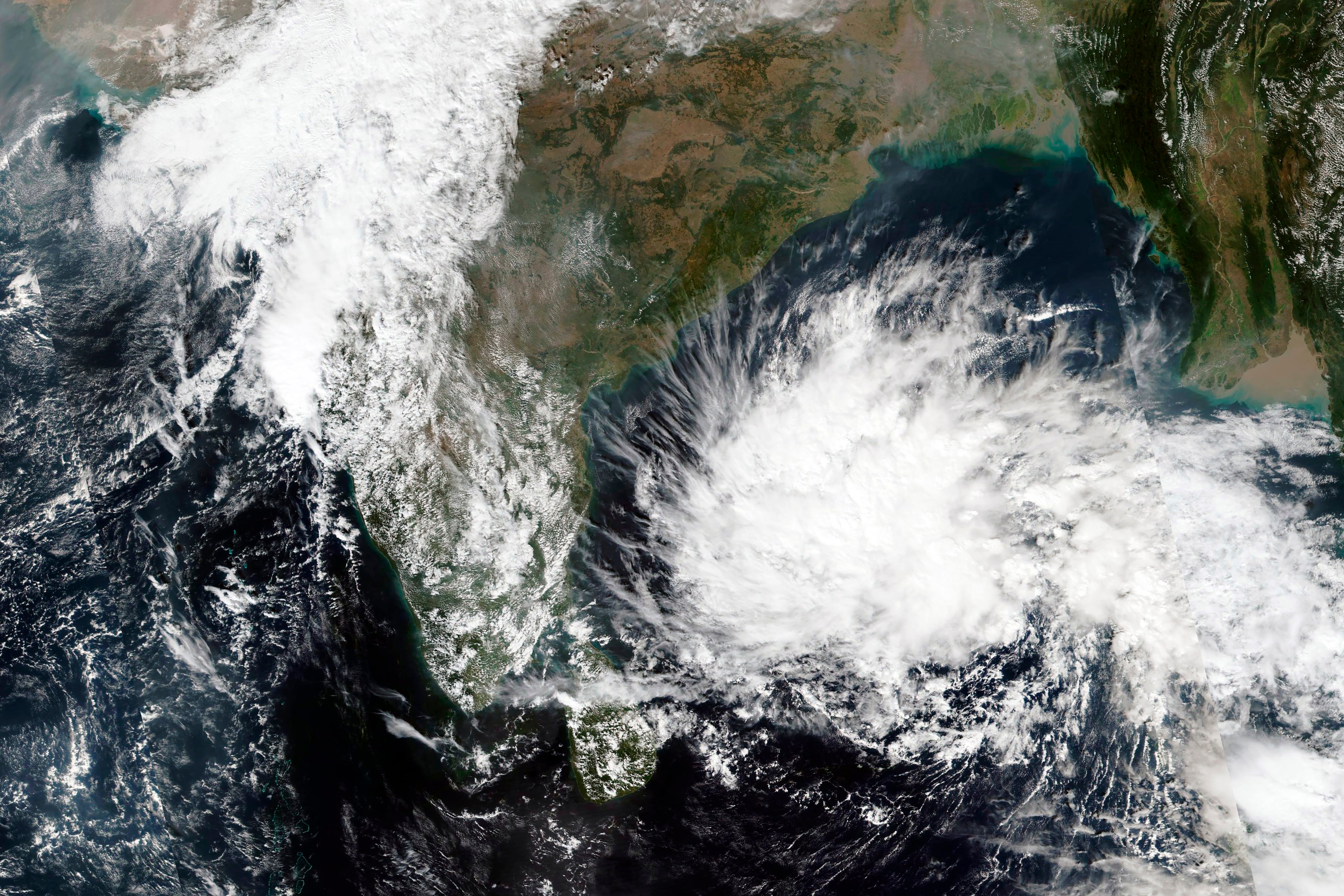Storm weakens after heavy rain, evacuation in southern India
A tropical storm has weakened after dumping heavy rains overnight in parts of southern India off the Bay of Bengal as more than 50,000 people evacuated to government-run camps

A tropical storm weakened after dumping heavy rains overnight in parts of southern India off the Bay of Bengal as more than 50,000 people evacuated to government-run camps, officials said Saturday.
No loss of life or major damage has been reported so far from the rain-hit areas of Andhra Pradesh state.
Kanna Babu, a state commissioner for disaster management, said 54,000 people who evacuated on Friday from vulnerable areas were waiting in nearly 200 state-run relief camps for the weather to clear before returning to their homes.
Authorities shut schools, canceled trains and anchored fishermen's boats in the affected areas until Sunday.
The storm is likely to further weaken later Saturday and curve toward eastern Odisha state before making landfall on Sunday as a deep depression, the Indian Meteorological Department said.
Scientists say that cyclones and powerful storms in the Indian Ocean are becoming more frequent and intense due to climate change.
“The Bay of Bengal and the Arabian Sea are now warmer compared to earlier decades because of climate change,” said K.J. Ramesh, one of India’s top meteorologists and the former chief of the weather agency.
He said that storms were also forming simultaneously as a result of climate change over the past decade — a phenomenon that was rare in the past.
In May, two storms hit India within 10 days, with Cyclone Tauktae killing at least 140 people across western states. Nearly 70 of the victims were on a barge that ripped free of its anchors and sank off Mumbai’s coast.
In May last year, nearly 100 people died in Cyclone Amphan, the most powerful storm to hit eastern India in more than a decade. It flattened villages, destroyed farms and left millions without power in eastern India and Bangladesh.
Some of the deadliest tropical cyclones on record have occurred in the Bay of Bengal. A 1999 super cyclone killed around 10,000 people and devastated large parts of Odisha. Due to improved forecasts and better-coordinated disaster management, the death toll from Cyclone Phailin, an equally intense storm that hit in 2013, was less than 50, according to the World Meteorological Organization.
——
AP Science Writer Aniruddha Ghosal contributed to this report from New Delhi.
___
The Associated Press Health and Science Department receives support from the Howard Hughes Medical Institute’s Department of Science Education. The AP is solely responsible for all content.
Bookmark popover
Removed from bookmarks